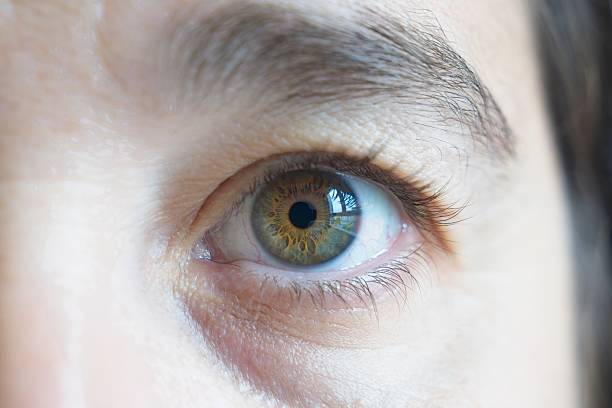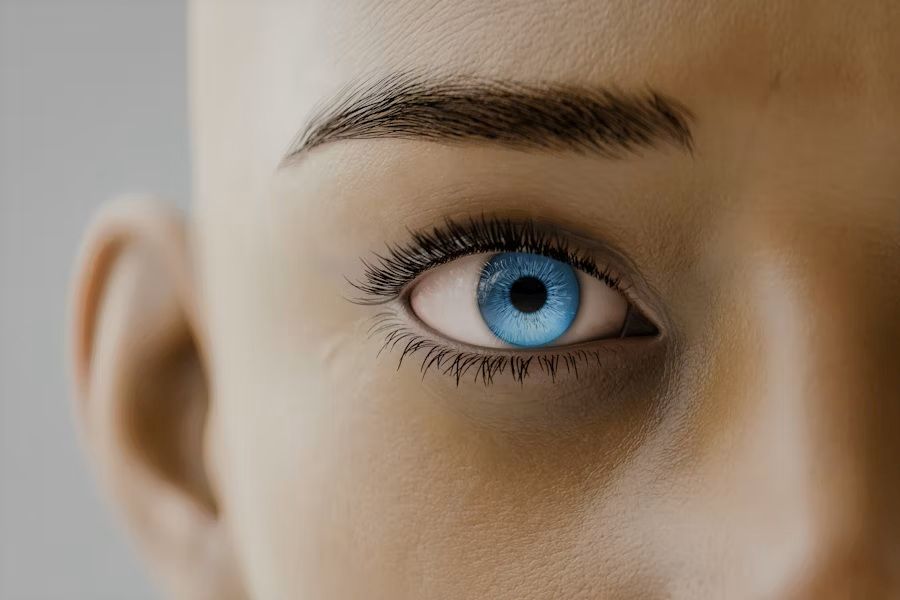Your Cart is Empty
How to Change Your Eye Color Naturally at Home Permanently: The Complete Truth

Millions of people search for ways to change their eye color naturally at home, hoping to transform their appearance without expensive procedures or artificial lenses. The desire to alter eye color permanently using natural methods is understandable—after all, eyes are often called the windows to the soul, and changing them feels like unlocking a new version of yourself.
However, the truth about naturally changing your eye color permanently at home is complex and often misunderstood. This comprehensive guide will separate fact from fiction, explore the science behind eye color, and provide safe, realistic alternatives for those seeking to enhance or transform their eye appearance.
The Science Behind Natural Eye Color
Understanding Iris Structure and Melanin
Your eye color is determined by the amount and distribution of melanin in your iris—the colored part of your eye. The iris contains two layers: the front layer (stroma) and the back layer (epithelium). The interaction between these layers and the melanin they contain creates your unique eye color.
Brown eyes contain high amounts of melanin in the front layer of the iris. Blue eyes have little to no melanin in the front layer, causing light to scatter and appear blue. Green eyes have a moderate amount of melanin with a yellowish pigment called lipochrome. Hazel eyes contain varying amounts of melanin that can appear to change color in different lighting conditions.
Genetic Determination of Eye Color
Eye color is primarily determined by genetics, specifically by multiple genes that control melanin production and distribution. The OCA2 and HERC2 genes play major roles, but at least 16 different genes contribute to eye color determination. This complex genetic control means that eye color is essentially fixed from birth and cannot be altered through external natural remedies.
Why Permanent Natural Change Isn't Possible
The melanin-producing cells (melanocytes) in your iris are established during fetal development and remain relatively stable throughout life. While some natural variations can occur due to aging, hormones, or medical conditions, these changes are typically subtle and not within conscious control.
Important Truth: No natural home remedy, food, herb, or technique can permanently alter the genetic programming that determines your iris melanin content and eye color.
Debunking Popular Myths About Natural Eye Color Change
The Honey Myth
One of the most persistent myths suggests that applying honey to the eyes can lighten eye color permanently. This claim is not only false but potentially dangerous. Honey is not sterile and can introduce harmful bacteria into the sensitive eye area, leading to serious infections.
Scientific Reality: Honey cannot penetrate the iris structure to affect melanin production. Any perceived lightening would be temporary irritation-induced changes that could indicate eye damage.
Herbal Eye Drops Claims
Various websites promote herbal eye drops or teas claimed to change eye color naturally. Common ingredients mentioned include chamomile, elderberry, and various plant extracts. However, none of these substances can alter iris melanin content.
Medical Warning: Using unregulated substances in or around your eyes can cause chemical burns, allergic reactions, infections, or permanent vision damage.
Diet and Supplement Myths
Some sources claim that eating specific foods or taking certain supplements can change eye color over time. While nutrition affects overall eye health, no food or supplement can alter the genetic factors that determine iris pigmentation.
Reality Check: A healthy diet supports eye health and may enhance the natural vibrancy of your existing eye color, but it cannot create a permanent color change.
Natural Eye Color Variations That Do Occur
Age-Related Changes
While you cannot consciously change your eye color naturally, some natural variations do occur throughout life:
Infant Eye Color Changes: Many babies are born with blue or gray eyes that change color during their first year as melanin production increases. This is normal development, not external influence.
Aging Effects: As people age, melanin production can decrease, sometimes causing eyes to appear lighter. Additionally, the iris may develop white or gray spots, and the pupil may become less responsive to light.
Lighting and Environmental Effects
Your eyes may appear different colors under various conditions:
Lighting Conditions: Different types of light can make your eyes appear warmer, cooler, or more vibrant, but this doesn't change their actual color.
Clothing and Makeup: Colors you wear near your face can create optical illusions that enhance or alter the perceived color of your eyes.
Emotional States: Strong emotions can affect pupil dilation, which may make your iris color appear more or less prominent.
Medical Conditions That Affect Eye Color
Several medical conditions can cause actual eye color changes, but these are not natural methods you would want to pursue:
Horner's Syndrome: Can cause heterochromia (different colored eyes) Glaucoma Medications: Some eye drops can darken iris color permanently Trauma or Injury: Eye injuries can sometimes alter appearance Certain Diseases: Some systemic diseases can affect eye pigmentation
These changes are medical concerns, not cosmetic solutions, and should always be evaluated by healthcare professionals.
Safe Alternatives for Eye Color Transformation
Professional Colored Contact Lenses
The safest and most effective way to change your eye color is through colored contact lenses prescribed by an eye care professional. Modern colored contacts offer:
Natural-Looking Results: Advanced designs that blend with your natural eye color Safety Standards: FDA-approved materials and proper fitting Variety: Hundreds of color options from subtle enhancement to dramatic change Reversibility: Temporary transformation without permanent alteration
Important: Never purchase colored contacts without a prescription, even for cosmetic use. Improperly fitted lenses can cause serious eye damage.
Makeup Enhancement Techniques
Professional makeup techniques can dramatically enhance your natural eye color:
Color Theory Application: Using complementary colors to make your natural eye color appear more vibrant Eyeliner Strategies: Different colored eyeliners can enhance or intensify eye color appearance Eyeshadow Selection: Strategic color choices that bring out natural eye pigments Mascara and Lash Techniques: Methods that frame and highlight your natural eye color
Iris Photography and Art
At Iris Blink, we believe in celebrating the unique beauty of your natural eye color through professional iris photography. This innovative approach captures the intricate patterns, colors, and details of your iris in stunning detail, revealing beauty you may never have noticed.
Iris Art Benefits:
- Appreciation of your natural eye's unique patterns and colors
- Artistic representation of your individual beauty
- Permanent artwork celebrating your natural features
- Discovery of subtle color variations within your iris
The Risks of Attempting Natural Eye Color Change
Chemical Burns and Irritation
Many substances promoted for natural eye color change can cause severe chemical burns to the sensitive eye tissues. The cornea, conjunctiva, and iris can all be permanently damaged by inappropriate substances.
Infection Risk
The eye area is particularly susceptible to bacterial, viral, and fungal infections. Introducing non-sterile substances increases the risk of serious infections that can threaten vision.
Allergic Reactions
Even "natural" substances can trigger severe allergic reactions in and around the eyes, leading to swelling, pain, and potential vision problems.
Vision Loss
The most serious risk of attempting DIY eye color changes is permanent vision loss. The eyes are irreplaceable, and damage from inappropriate treatments cannot always be reversed.
Professional Eye Color Change Options
Surgical Procedures
For those seriously considering permanent eye color change, surgical options exist but carry significant risks:
Iris Implants: Colored silicone implants placed over the natural iris. This procedure is banned in the United States due to safety concerns.
Laser Surgery: Some procedures claim to remove melanin from brown eyes to reveal blue underneath. These are experimental and carry substantial risks.
Important Consideration: All surgical eye color change procedures carry risks of complications, vision loss, and other serious side effects.
Professional Consultation
If you're considering any form of eye color change, consult with:
- Board-certified ophthalmologists
- Licensed optometrists
- Certified contact lens specialists
These professionals can provide safe options and honest assessments of risks and benefits.
Embracing Your Natural Eye Color
The Beauty of Uniqueness
Your natural eye color is part of what makes you uniquely beautiful. The specific patterns, flecks, and variations in your iris are as individual as your fingerprints. Rather than trying to change what nature has given you, consider celebrating and enhancing your natural beauty.
Enhancement vs. Change
Instead of attempting to change your eye color permanently, focus on enhancement techniques that bring out the best in your natural coloring:
Healthy Lifestyle: Proper nutrition, hydration, and sleep can improve the overall health and appearance of your eyes Professional Photography: Capture the unique beauty of your natural eye color through professional iris photography Quality Eye Care: Regular eye exams and proper vision correction can ensure your eyes look and feel their best
The Iris Blink Perspective: Celebrating Natural Beauty
At Iris Blink, we specialize in capturing the extraordinary beauty that already exists within your eyes. Through advanced iris photography techniques, we reveal the stunning patterns, colors, and details that make your eyes uniquely yours.
Why Iris Art Matters
Instead of trying to change your eye color, iris art allows you to:
- Discover the hidden beauty within your natural eye color
- Create lasting artwork that celebrates your individuality
- Appreciate the complex patterns and subtle color variations in your iris
- Own something truly unique that cannot be replicated
The Process of Iris Photography
Professional iris photography involves specialized macro lenses and lighting techniques that capture details invisible to the naked eye. The resulting images reveal:
- Intricate collarette patterns around the pupil
- Radial furrows and crypts unique to your iris
- Subtle color variations and natural highlights
- Complex textures and patterns that create natural abstract art
Practical Tips for Eye Enhancement
Natural Ways to Make Your Eyes More Beautiful
While you cannot change your eye color permanently, you can enhance your natural beauty:
Eye Health Maintenance:
- Stay hydrated to keep eyes bright and clear
- Get adequate sleep to reduce redness and puffiness
- Use quality eye care products
- Protect eyes from UV damage with sunglasses
Makeup Enhancement:
- Use colors that complement your natural eye color
- Learn proper application techniques for your eye shape
- Invest in quality makeup products
- Consider professional makeup lessons
General Health:
- Maintain a healthy diet rich in eye-supporting nutrients
- Exercise regularly to improve circulation
- Manage stress levels
- Avoid smoking and excessive alcohol consumption
Photography Tips for Showcasing Natural Eye Color
If you want to capture the beauty of your natural eye color:
- Use natural lighting when possible
- Avoid harsh flash photography
- Consider professional portrait photography
- Explore macro photography techniques
- Learn about color correction in photo editing
The Future of Eye Color Science
Emerging Research
Scientific research continues to explore eye color genetics and development. While current understanding confirms that natural permanent change isn't possible through home methods, ongoing research may reveal new insights about iris pigmentation and color variation.
Gene Therapy Possibilities
Future developments in gene therapy might eventually offer safe methods for eye color alteration, but such treatments would require extensive research, testing, and regulatory approval before becoming available.
Technological Advances
Improvements in colored contact lens technology continue to offer better, safer, and more natural-looking options for temporary eye color change.
Making Informed Decisions
Questions to Ask Yourself
Before pursuing any eye color change method, consider:
- Why do you want to change your eye color?
- Are you willing to accept the risks involved?
- Have you explored safe alternatives?
- Are you prepared for potential complications?
- Have you consulted with eye care professionals?
Red Flags to Avoid
Be wary of:
- Products promising permanent natural eye color change
- Unregulated substances or treatments
- Before/after photos that seem too good to be true
- Testimonials without medical verification
- Any treatment that involves putting unregulated substances in your eyes
Conclusion: Embracing Truth and Natural Beauty
The honest answer to whether you can change your eye color naturally at home permanently is no—there are no safe, effective natural methods for permanent eye color change. Your eye color is determined by genetics and cannot be altered through home remedies, foods, herbs, or other natural treatments.
However, this doesn't mean you're without options. Safe, temporary alternatives like professional colored contact lenses offer effective eye color change, while makeup techniques can enhance your natural beauty. Most importantly, learning to appreciate and celebrate your natural eye color through methods like professional iris photography can reveal beauty you never knew existed.
At Iris Blink, we believe that the most beautiful eyes are healthy eyes that reflect the unique individual behind them. Rather than trying to change what nature has given you, consider exploring the extraordinary beauty that already exists within your natural eye color. The patterns, variations, and subtle details in your iris are as unique as you are—and that's something truly worth celebrating.
Your eyes tell your story, reflect your emotions, and connect you with the world around you. Instead of trying to change them, learn to see them as the remarkable, unique features they truly are. The journey to appreciating your natural beauty often reveals treasures you never knew existed.
Leave a comment
Comments will be approved before showing up.




